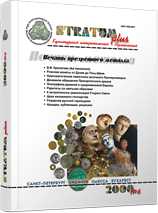Смерть в Китае (Эпоха древности)
The Death in China (the Ancient Period)
Author(s): Leonid A. MosionjnicSubject(s): History, Anthropology, Social Sciences, Cultural history, History of ideas, Ancient World, Cultural Anthropology / Ethnology
Published by: Издательский дом Stratum, Университет «Высшая антропологическая школа»
Summary/Abstract: The article attempts to restore the concepts of death (in close connection with the sense of life) in the traditional Chinese culture. The author focuses on real Chinese concepts, free of the Buddhist influences, the reason why special attention is concentrated on the ancient period. Starting point for the author was the desire to check the conclusions drawn by Ph. Aries in his work «L’homme devant la mort» for their universality: are these conclusions true only for the Western (more precisely – French) culture, or do they have a broader application?Analysis has shown that Aries’ ideas help one understand, to a great extent, the psychological foundations of the Chinese culture, though one cannot apply them literally. First of all, it is important to recognise that the Chinese culture spreads out from the original Shang-Yin and Zhou mythological concept: the souls of the dead go to the world, which is not only a copy of the earthly one, but which is not even separated from it, and at the same time connected somehow with the water element. It is there where they become powerful spirits, capable to influence the earthly affairs of their successors (and thus keeping their ties with the life). Therefore, it is prestigious to become one of them, and it is not everybody’s destiny, and the death is sort of sacrifice for the sake of the collective. Even the gods, according to such concepts, are just the dead ancestors, rather than personified natural phenomena, compared to most other mythologies. Moreover, unlike in other mythologies, in the Chinese mythology one can become a god only through death: it practically does not know other divinities besides the beatified ancestors. There is no question about one’s personal after-death destiny in this conceptual system: we have to deal with the typical «pre-axis» (by K. Jaspers) culture, which has not yet worked out its concept of personality. Parallel to this, Chu kingdom saw development of religious and mythological concepts of the autochthonous population, minutely studied by M.E. Kravtsova. According to these concepts, the after-death immortality in Elysium above the stars does exist, but only for the selected souls, capable of passing the after-death trial, i.e. to repeat the path of the Sun (more precisely, part of the path located within the pure celestial spheres). The other souls remain within this world, where they are threatened by the chthonic monsters. We can only guess about the principles of distinction among the “selected” and “other” souls, based on the analogies. To a great extent, Chu concepts of the world are similar to Zhou and Shnag-Yin ones, but it is still difficult to say why. Does one deal here with two “sub-traditions” (as M.E. Kravtsova believes) within the same culture, or with two different cultures and their inter-influences which led to a complete merge in the Han epoch. So far, given the firm parallels drawn by the early Chinese records between the Chu and Xia, as well as traces of northern and north-western influences, it is difficult to decide which of the two traditions was the primary one, and whether they were both autochthonous or at least one of them was imported. During Jaspers’ “Axenzeit” and later epochs, these concepts were clearly materialised in Confucianism, classic Daosism, and at last, the “celebrities” (mingshi) of the epoch of Six Dynasties (Liuchao, III-VI AD).
Journal: Stratum plus. Археология и культурная антропология
- Issue Year: 2000
- Issue No: 6
- Page Range: 297-344
- Page Count: 48
- Language: Russian
- Content File-PDF

